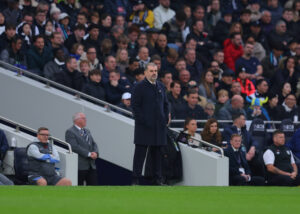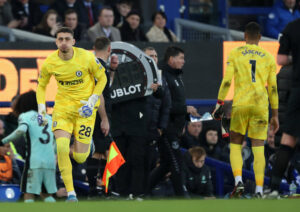English football is facing a fresh Covid-19 crisis. At the time of writing, 28 Premier League and EFL matches have been postponed in the space of just a couple of weeks.
As the Omicron variant, in addition to the Delta variant, continues to spread up and down the country, some Premier League clubs are lobbying the top echelon to introduce a circuit breaker. Brentford manager Thomas Frank publicly endorsed it up until Boxing Day so that the chain could be broken.
In theory, this is an okay idea; in reality, that is a different matter. The Premier League, as well as the EFL, are reluctant. This is not as simple as March 2020 when football, and then the country, were shut down. Different factors will be bearing on their minds in the coming days and weeks.
The Circuit Breaker Dilemma Facing English Football
Circuit Breaker Effectiveness
The immediate question that comes to mind is the effectiveness of the circuit breaker. Going back to the original Covid-19 emergency, football paused with a plan to restart on 4 April bearing in mind “conditions at the time”. As we know, ten days later the UK Government enforced a nationwide lockdown.
The Premier League’s shutdown ultimately worked because the government closed society. Players, coaches and staff were not able to go out like everyone else.
Fast-forward to the present day, the situation is completely different. Society is open, albeit with advice from the chief medical officer to limit social interactions. People in football are free to go out for dinner, have parties and grab any late Christmas shopping. To put it simply, they can go about their lives. And the possibility of the industry locking down only their employees, as well as their families, will be unfeasible as well.
Paul Hunter, a professor in medicine at the University of East Anglia, told The Athletic a circuit breaker is unlikely to be effective for this reason.
“If clubs have a circuit break and then come back, COVID will still be around,” he said. “Even if we had a national-level circuit break for two weeks and managed to stop (omicron’s) growth, at the end of that period it would probably take off again.
“It’s difficult to know what best we can do to resolve this at a sports level. Cases are rocketing at the moment and they are particularly going up in adults in their 20s, and most footballers fall into that age group.
“Even if you have had COVID in the past, or you have had two vaccinations, that isn’t enough to protect you from omicron. It is going up quickly. Cases are doubling every two to three days. It must slow down soon but the big question is how long it’s going to last.”
The Premier League are well aware of this. The Independent learnt that the advice is this wave will be “short and sharp”. Football will look to weather the storm and get through it.
Broadcasting Consequences
There is nothing that grabs the attention of the football industry quite like the threat of losing money. In the case of a circuit breaker, the threat is real and substantial.
Relatively speaking football lost a lot of money from the March 2020 pause and beyond. EFL chairman Rick Parry has already said clubs in the three tiers below the Premier League have a £200 million hole to fill. For the top division, chief executive Richard Masters says theirs is closer to £2 billion.
These are big numbers. International broadcasters have already privately mentioned the word no executive wants to hear: rebate. Of course, this will only happen if the Premier League went forward with the proposition. But without a doubt will this be a major factor in their decision making.
Football is a business and, like every other economic sector, the show goes on until the government finally says to pack it up.
Vaccine Uptake
Football has always distanced itself from the vaccine conversation. It has often cited personal choice as an escape clause. However, the unwanted discussion is now closing in.
Whether players, in addition to as staff, is crucial to how severely impacted teams are. Fully vaccinated people (double-dosed of Pfizer, Moderna or AstraZeneca, or a single dose of Johnson & Johnson) are required to take a lateral flow test daily for seven days, or 10 days if that was when they were last in contact with a person who tested positive for Covid-19.
On the other hand, unvaccinated people “are not eligible for this new daily testing policy”. They must self-isolate for ten days if they were in contact with a positive case.
The EFL collected data in November and found that a quarter of players “do not intend” to get vaccinated while 59% are fully vaccinated. Another 10% have received their first dose and 6% are set to receive their first jab.
In comparison, Premier League vaccination data from October showed 69% were double-jabbed and another 12% had received their first dose.
Matches will continue to be impacted at a larger rate as long as a good proportionate of players are not vaccinated due to self-isolation upon a contact rather than positive cases.
Already the mood has begun to shift. The Premier League and Alan Shearer partnered to support increased vaccine uptake. Masters has also written to clubs urging them to “strongly encourage” players to get fully vaccinated. UEFA are set to publish a promotional vaccine video to encourage uptake among players and fans. On a separate note, Queens Park Rangers manager Mark Warburton recently predicted football will introduce mandatory vaccination.
How far the conversations go will be seen in the coming weeks. With a circuit break proposition being put forward, and the risk of further financial consequences, it could be likely a new policy on vaccination will not be far behind either.
Scheduling Nightmare
The persistent headache that is the football schedule is about to get a whole lot worse one way or the other. Right now, football has two options: deal with matches on a case-by-case basis and try to keep us all pre-occupied from the world around us, or shut it down and think about the scheduling repercussions later.
Obviously, the former option is what is happening now and there are clear drawbacks. Sporting integrity, allegations of bias (we see you Brendan Rodgers), health and safety and whether it is feasible to continue like we are. Covid-19 is spreading like wildfire and football is by far immune to its effects.
Despite every problem, the industry is nervous about what will happen if they take action now. Premier League clubs have discussed the possibility of breaking until the weekend of the FA Cup third round (7 January to 10 January). In addition to the games already postponed, three matchdays will be missed as well as the League Cup quarter-final.
The danger of this is whether football will even return on time. It did not do so in April 2020 and there is no guarantee it would in January 2021. The situation will get worse before it gets better, and a temporary pause transforming into an indefinite pause is a risk that will create a scheduling nightmare.
The benefit Project Restart had was the calendar gave football space to manoeuvre. The Premier League and the EFL operated in a bubble, which then led to UEFA enforcing a bubble for Champions League in August. The League Cup was already done, the FA Cup had three rounds to play, the Europa Conference League did not exist and the following season was starting later.
This time around the League Cup has three rounds to play, the FA Cup is only in its third round (and replays are being played), Europe will not occur separately, next season starts a week earlier due to the winter 2022 World Cup. To make things worse, a South America international break is pencilled in between 24 January and 4 February as well as the Nations League in June 2022.
Flexibility is not a blessing the clubs or the authorities have if they were to impose a circuit breaker.
Project Restart Protocols
Simply, the hope football has is the Project Restart Protocols will work. Daily lateral flow tests, to enter training grounds, and two PCR tests per week are now in operation.
Inevitably cases will continue to surge but the idea is this will allow negatively tested players and staff to continue to work at training grounds. They will not be in a position to close their training centres, like Manchester United and Tottenham Hotspur were forced to do.
Whether this works, only time will tell. A circuit breaker will be talked about more, but, as of now, football goes on.
Main Photo






